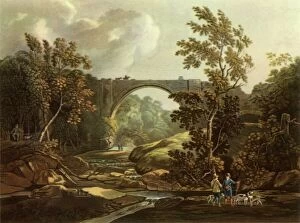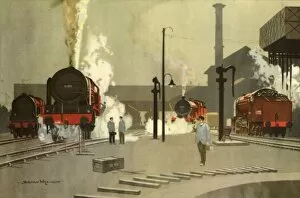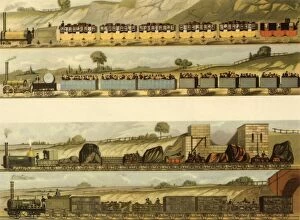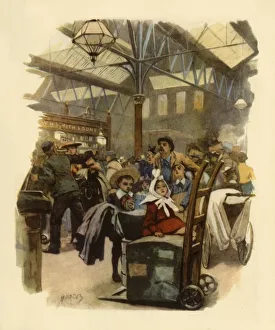Arthur Elton Collection
"Arthur Elton: A Glimpse into the Evolution of Railways" Step back in time and explore the fascinating world of railways through the lens of Arthur Elton
All Professionally Made to Order for Quick Shipping
"Arthur Elton: A Glimpse into the Evolution of Railways" Step back in time and explore the fascinating world of railways through the lens of Arthur Elton. This collection of captivating images, dating back to 1945, takes us on a journey through significant moments in railway history. The Tanfield Arch in 1804 stands tall as a testament to engineering prowess. Created by Joseph Constantine Stadler, this architectural marvel showcases the ingenuity that paved the way for future advancements. Camden Town Engine Sheds, circa 1935, captured by Norman Wilkinson, offers a glimpse into the bustling hub where locomotives were housed and maintained. It serves as a reminder of the vital role these sheds played in keeping trains running smoothly. Travelling on the Liverpool and Manchester Railway in 1831 was an extraordinary experience depicted beautifully by SG Hughes. Witnessing passengers immersed in awe-inspiring landscapes while aboard early steam-powered trains evokes a sense of wonderment. The Atmospheric Railway at Dawlish is shrouded in mystery with its creator remaining unknown. This image from 1847 transports us to an era when innovative technologies were being tested to revolutionize rail travel. A Blenkinsop Locomotive at a Yorkshire Colliery takes us even further back to 1814 when coal mining relied heavily on steam power. The anonymous artist captures both raw industrial might and delicate artistry within this scene. Olive Mount Cutting on the Liverpool and Manchester Railway provides insight into how nature had to be tamed for progress. Documented by an unidentified creator in 1831, it reminds us that railways often required reshaping landscapes for their construction. The Excursion Train Galop sheet music cover from around 1860 adds rhythm to our exploration of railways' cultural impact. Its lively composition reflects society's growing fascination with train travel during this period. The Metropolitan Railway near Paddington immortalizes an unknown artist's vision of the bustling London underground in 1863.












